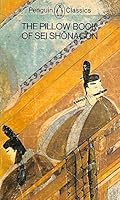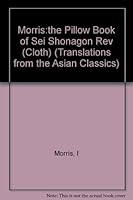- Welcome to FictionDB, Guest
- | My Account
- | Help

The Pillow Book of Sei Shonagon — Sei Shonagon
buy the book from amazon
Paperback editions:
Hardcover editions:
eBook editions:
Audio editions:
Large Print editions:
Browse Similar Books at Amazon
Literature & Fiction->Literary
Description
This unique volume was first rendered into English in 1889. In 1928, Arthur Waley, a seminal figure in the Western studies of Japanese culture, undertook and published this translation. The distinguished scholar devised this abridged version of the text, re-creating in English the stylistic beauty of its prose and the vitality of its narrative. Waley's interpretation offers a fascinating glimpse of the artistic pursuits of the royal court and its constant round of rituals, festivals, and ceremonies.
CERTAIN CONTENT THAT APPEARS ON THIS PAGE COMES FROM AMAZON. THIS CONTENT IS PROVIDED ‘AS IS’ AND IS SUBJECT TO CHANGE OR REMOVAL AT ANY TIME.



 Amazon UK
Amazon UK